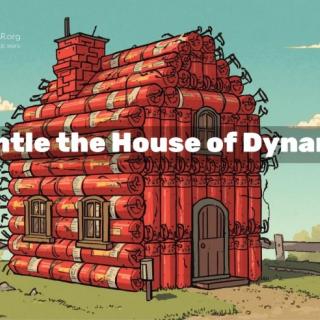Advertisement
The first 10 minutes of Rebuilding Paradise are harrowing.
Ron Howard’s documentary is mostly about the aftermath of the November 2018 “Camp Fire” in Paradise, California, but first it shows us the fire itself. With the help of cellphone and dashcam footage, it recreates people’s terror as they attempt to escape a wildfire that engulfed their town only minutes after originating on a nearby hillside.
In one particularly hair-raising moment, we find ourselves inside a vehicle barreling along a road that has turned into a fiery obstacle course. Meanwhile, the air is so filled with smoke that the day appears to have turned to night.
The danger is real, we learn. By the time the fire is brought under control, 85 residents of Paradise are dead. Of those who survive, most have lost their homes, along with schools, municipal buildings and services.
Following this terror-stricken beginning, Howard’s documentary evolves into a month-by-month account of attempts by residents and officials to revive a community that has been largely destroyed. The result is a film that’s sincere and warmhearted.
And, it must be said, just a little dull.
Part of the problem is Howard’s focus on what a close-knit and beautiful community Paradise was, which made its loss so tragic. Though it undoubtedly was beautiful, being located in the foothills of the Sierra Nevada Mountains, it’s hard for those of us who never lived there to share the residents’ nostalgia.
Then again, let’s face it: A big part of the film’s problem is its timing. Much as we want to be sympathetic to the day-to-day challenges faced by the survivors, we can’t help being reminded of our own day-to-day challenges due to a health disaster that shows no signs of winding down.
This is particularly difficult when the film focuses on the tireless efforts of school superintendent Michelle John to keep local classes in session and to give the 2019 seniors a bona fide graduation ceremony. With the benefit of hindsight, we can’t help thinking that it’s all for naught because the following school year will be 10 times as difficult in Paradise and everywhere else.
Howard also tries a bit too hard to show individuals’ community spirit and even heroism. Or maybe it just seems that way because of our own, mid-2020 perspective. Having witnessed some of our own fellow citizens refusing to even slap on a mask to promote the general good, we know all too well that not everyone reacts to disaster in a selfless way.
Is the film looking at the Camp Fire aftermath with rose-colored glasses? The question comes up in relation to one of its most heroic figures, Matt Gates, a police officer who works to raise spirits through efforts such as organizing a Christmas tree-lighting ceremony. Then, late in the film, we suddenly learn that Gates and his wife have separated. Why? We’re never told, maybe because Howard doesn’t want to tinge his warm portrait of the town with a hint of negativism.
In a break from the general positivity, Rebuilding Paradise points out that there are culprits here as well as victims. The main culprit is Pacific Gas & Electric, whose failure to maintain its power lines caused the spark that set off the deadly fire. More generally, the culprit is poor forest management, which makes the area vulnerable to wildfires due to young growth that burns quickly.
More generally still, as the film notes briefly, the culprit is climate change. Yet no fingers are pointed at those who’ve ignored the problem and have even gone out of their way to deny it exists.
To pick out the most obvious example: Donald Trump is shown talking about his post-fire visit to the town—which he accidentally calls “Pleasure”—but the film doesn’t report his odd theory that wildfires like this could be prevented if California just raked out the forest floors once in a while. Nor does it mention the administration’s ongoing attempts to undermine environmental regulations.
Perhaps the film’s sponsor, National Geographic, is afraid of unnecessarily aggravating the Trump administration. Or perhaps director Howard is more interested in the personal rather than the political. Whatever the reason, the result is a portrait of loss, courage and perseverance that—due to reasons both in and beyond the filmmaker’s control—comes off as needlessly bland.
Rating: 3 stars (out of 5)
Rebuilding Paradise (PG-13) is available beginning July 31 through VOD outlets or Columbus’s Gateway Film Center (gatewayfilmcenter.org).
More reviews by Richard Ades can be found on his blog, ReelTimeWithRichard.com.



